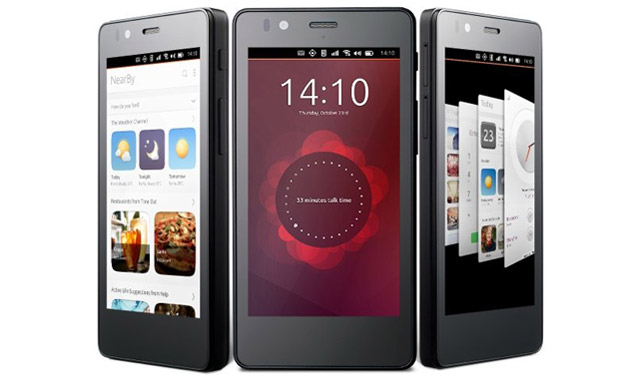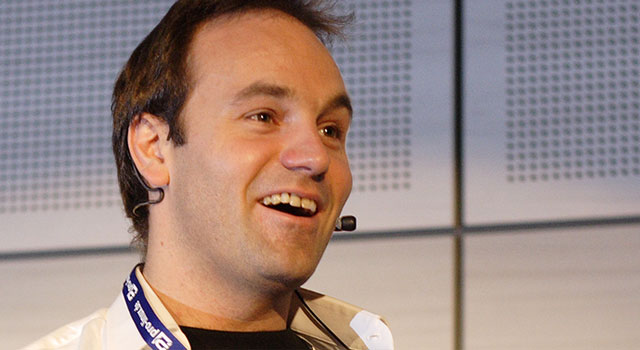
A new arrival into an extremely competitive market, the first Ubuntu-powered phone has finally gone on sale in Europe — two years after a failed attempt to generate crowdfunding nevertheless raised US$12m. A sleek, polished rectangle, it appears much like other smartphones, but promises a different experience.
Canonical, the company behind Ubuntu, one of the most popular distributions of the open-source operating system Linux, has the conviction that platform convergence is the future. Taking an operating system used in desktops, laptops and servers and using it as the foundation for a mobile operating system is therefore a natural step. In a market already filled by Apple, Android, BlackBerry and others, Mark Shuttleworth — Canonical’s billionaire founder and tireless Linux champion — obviously feels that what consumers and developers need, they will in time learn to want.
The phone, officially the Aquaris E4.5 Ubuntu Edition from Spanish firm BQ, like many projects based on open-source ideas (such as Android) keeps the needs of developers in mind. This isn’t a bad idea, considering that Ubuntu is starting from scratch in this market and must build up an ecosystem around its phone. Compared to the number of apps available to Apple and Android phone users, only a fraction are compatible with Ubuntu — at launch these include only Facebook, Twitter, Amazon, Time Out, Yelp and the Cut the Rope puzzle game.
Ubuntu also plays to the mindset of open-source developers, suggesting that “your content and services become integral to the core phone experience”. Canonical aims to create a tight ecosystem of consumers and developers that can interact with each through a collaborative platform built with both their needs in mind, encouraging them to develop apps and other software for the phone. This type of lean core platform model usually encourages a strong community to emerge around a platform and product, fast. Considering convergence at various levels is Canonical’s aim, this makes perfect sense.
Then again, as most phone users are not developers, why would an open-source approach encourage customers to buy the phone? Here Canonical is bringing something rather more radical to the table, what it calls scopes.

Scopes is a technology which aims to please content creators and content consumers. With names such as NearBy, Today, Music and News, they are an interface that draws together content from many sources into a single customisable screen. For example, Today brings together data from weather, calendar and contacts sources. NearBy brings data from services such as Foursquare, Yelp, and Time Out to find recommendations for bars or restaurants. Photos pulls in images taken with the phone and those on Facebook, Flickr or Instagram.
For content creators, scopes provides visibility and a dedicated space to display their content to users. In this way, scopes actually does away with the need for apps in the sense that these services exist on current phone platforms. Built from straightforward HTML5, scopes pages can be easily edited and are cross-platform compatible. This is a neat business model for content providers, although whether customers will find this a more appealing and intuitive method than the phone-plus-apps model they’ve become accustomed to remains to be seen.
The Ubuntu phone is certainly affordable: more devices are promised, but the Aquaris E4.5 is available in Europe for €169,90 (around R2 200). The phone’s hardware specs are relatively modest — a quad-core ARM Cortex A7 1,3 GHz processor and Mali 400 GPU from MediaTek, 1GB of RAM, 8GB of internal storage and a 540×960 (qHD) screen. It also comes with an 8-megapixel rear camera and boasts a better-than-average 5-megapixel front camera with which it can generate full HD video for improved video calling, Skype and “selfies”. In any case, it is cheaper than many other competing smartphones by thousands of rand.
This low price point is important to encourage buyers to experiment with it. Not a bad tactic — if it doesn’t also convey a message of a substandard product to potential customers. We have only to look to early secondary adoption of open-source software to see how products that cost less can also be misunderstood to be of lesser quality.
It’s too early to tell if Canonical will attract users to the Ubuntu phone – but the phone’s first limited release sold out on its first day on sale. It has innovative new technology, a simple and loosely controlled collaborative platform, a low price and an eager developer base on its side. This is all part of Canonical’s strategy of convergence across platforms of a single operating system and approach.
It is difficult to see iPhone users moving to Ubuntu, but it may take a chunk out of Android’s user base. Will this help or hinder the growth of an open-source approach and products in a market where Apple is the most entrenched player? Do we need yet another platform? Does this lead to fragmentation of platforms at a more abstract level? Shuttleworth has played his hand. Now we must see how others react.![]()
- Maha Shaikh is assistant professor of information systems at the University of Warwick
- This article was originally published on The Conversation




